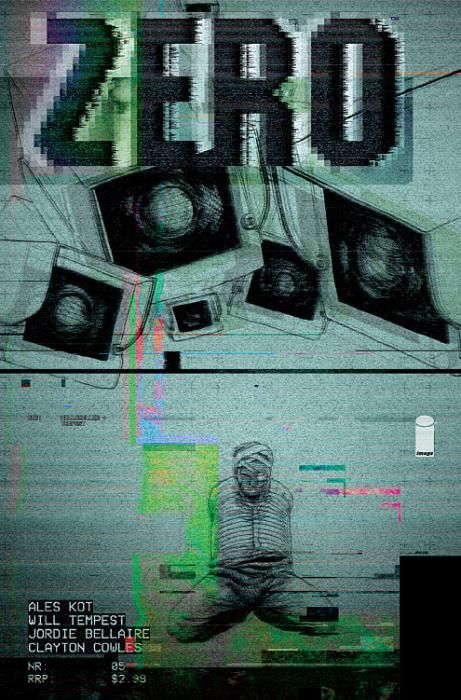Four stars or no, Ales Kot and Will Tempest's "Zero" isn't a series that I rush home to tell my friends about. With other work this impressive, I'm immediately evangelical, throwing the issue at my roommates and texting about it to everyone else. But each month when I've finished "Zero," I find myself lying there in thought with the issue in my lap. It's an intensely private series, worming under the skin in a way you don't necessarily want to share. I'm not surprised it's flown relatively low on the critical radar.
Plus, it's been a slow, slow build over the past four issues. Zero's been introduced in bits and pieces, in vignettes and randomly arranged memories, so each installment feels like its own animal. However, this issue takes an unexpected turn outward from character building to world-building. The final panel is not only a stunning image but a surprise that begins to reveal what exactly Zero's "world-changing" choice was. I don't want to say that it raises the stakes, since the stakes have always been plenty high and centered squarely on Zero, but it definitely broadens them.
Most of the issue, however, focuses on Zero's recuperation after the prolonged, brutal assassination in Issue #4. Will Tempest's fragile, direct art is a wonderful fit for this issue about recovery and revelations. His characters all look wounded around the eyes, but with a keenness to them, as if they're more curious as to why they find themselves hurt than bothered by being so. He also excels at conveying the physicality of long-term spies. His bodies look real, all lumps and burbled edges, and they look breakable. When Zero is prodding his wounds in the dark, the silence in the panels is palpable.
Jordie Bellaire's coloring also adds a lot to the atmosphere. Per usual, her work is a wonder. How she's managed to color all these different artists so splendidly is beyond me. The flat, sterile palette she uses here works just as well as the sleeker, warmer colors in Issue #2, which were just as effective as the pulpy-icy colors in #3. In addition, the two 2038 scenes that bookend this issue are colored in a mournful, otherworldly light-blue wash that ties them together and foreshadows the final reveal. Clayton Cowles continues to do elegant, unobtrusive work on lettering. Poor lettering could have crippled the effect of a few of these panels, but Cowles puts everything in the right place.
With all of this other excellent work, it would be understandable to neglect Ales Kot's contribution. He writes a spare and fiercely, fiercely edited script. It's made this series feel like a real showcase for the many artists involved, but that's also made it a brilliant example of how disciplined Kot is. It's tempting to make the big plot plays early on, but Kot has delayed the reveals and paced the characterizations with patience and tight control.
Issue #5 isn't my favorite issue of "Zero" thus far, but it's just as remarkably done as its predecessors. With that ending, it's switched the rules of the narrative and set up for an exciting new turn come March.

